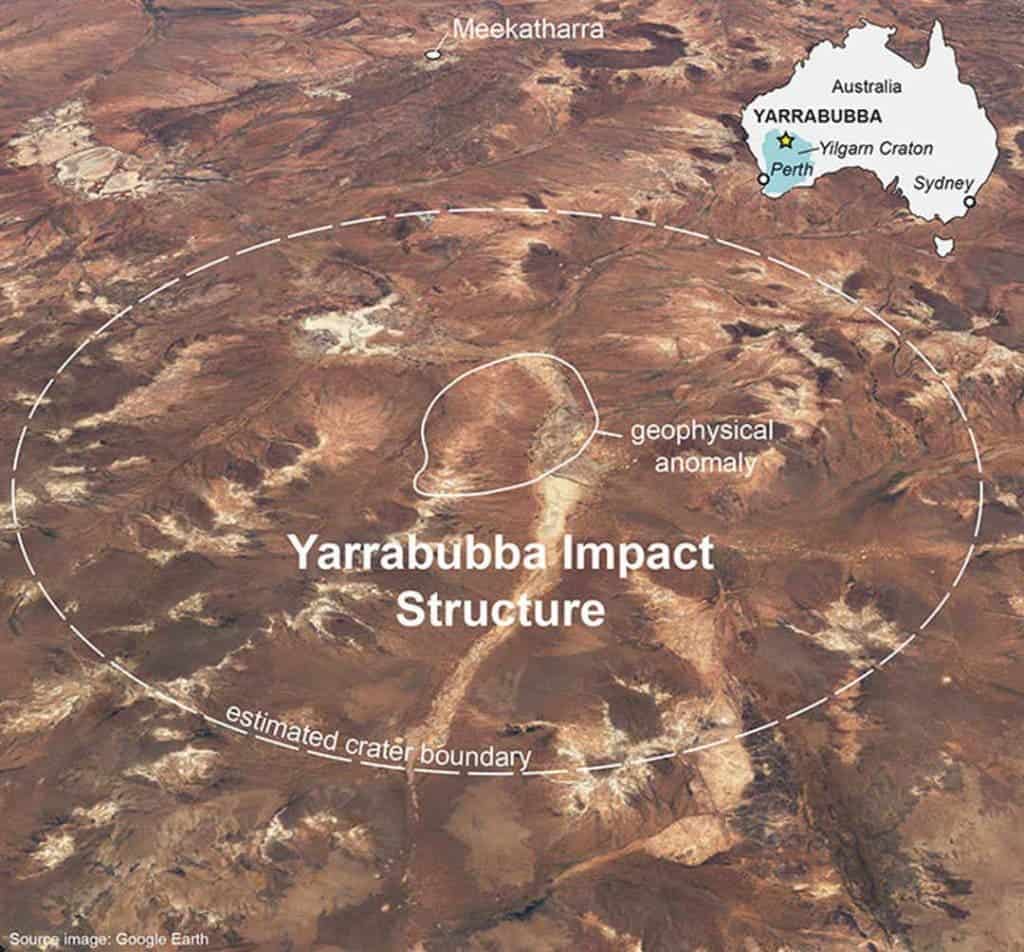Using a novel method, scientists have dated the 43-mile-wide Yarrabubba crater in Western Australia to 2.2 billion years ago.
That’s around the same time our planet recovered from an almost unbelievable ice age known as “Snowball Earth”, during which most of Earth’s surface was covered in ice sheets, some up to 3 miles thick — and it’s probably not a coincidence.

The impact crater is about half the age of Earth itself, making it the oldest known impact structure on the planet. It’s 200 million years older than the previous record-holder, a title previously claimed by the enormous 190-mile-wide Vredefort Dome crater in South Africa.
In order to reveal the precise date when the asteroid responsible for the crater hit Earth, Australian geologists analyzed minerals extracted from deep cores around the crater site. Tectonics and erosion can alter the impact structure so much that traditional dating methods can be imprecise for extremely ancient sites, so drilling is essential to make sure you’re taking samples from the right place. The samples were then dated with the uranium-lead method.
But it’s not just the fact that this crater is old — its precise age is important.
The timing of the Yarrabubba impact coincides with the end of the early “Snowball Earth”, a period when the Earth was almost entirely covered in ice. As the name of the ice age suggests, during that time the planet looked like a glistering white ball rather than the blue marble we all know. It was a period when the world’s first photosynthetic creatures emerged — and without any ecosystem to keep them under control, they photosynthesized so much that they triggered a global cooling by breathing in the CO2 and eliminating the oxygen.
The planetary cooling was so extreme that it left the Earth almost completely covered by ice sheets. It was a dramatic event in the planet’s evolution placing immense pressures on surviving (still microscopic) creatures and almost destroying life on Earth altogether. However, the cyanobacteria responsible for producing the oxygen also caused the event which enabled the subsequent development of multicellular forms.
To this day, it’s not exactly clear just why this era ended — but Yarrabubba might hold the answer.
Considering the size of the Yarrabubba crater, researchers estimate that the impact released as much as 11,000 trillion pounds of water vapor into the atmosphere. This immense quantity of greenhouse gas might have considerably warmed the planet, potentially causing a climate shift that relieved some regions out of an icy embrace, spelling the end for this frozen era.
It’s not just the timing that fits. There also is physical evidence that supports this idea. For instance, after the impact, glacial deposits are absent in the rock record for 400 million years.
“The impact event itself might not have been the full reason for a global climate shift, but if we are in a dynamic period of Earth’s history when other things are happening this might have been the straw that broke the camel’s back,” co-author Chris Kirkland, a geologist at Australia’s Curtin University, told the Australian Broadcasting Corp.
The study, which was published in the journal Nature Communications, has important implications for future impact crater discoveries. The same method could be used to date other craters which may be much more significant than previously believed.
“Yarrabubba is about half the age of the Earth and it raises the question of whether all older impact craters have been eroded or if they are still out there waiting to be discovered,” co-author Aaron Cavosie of Curtin University said in a statement.


